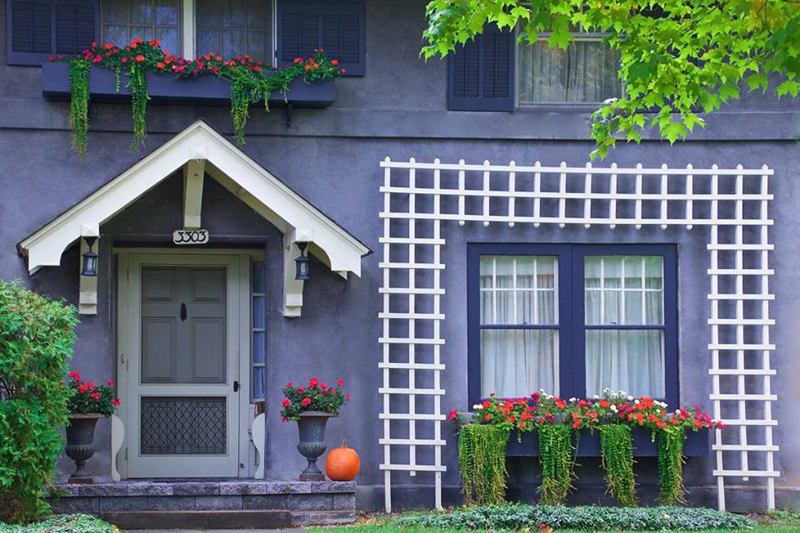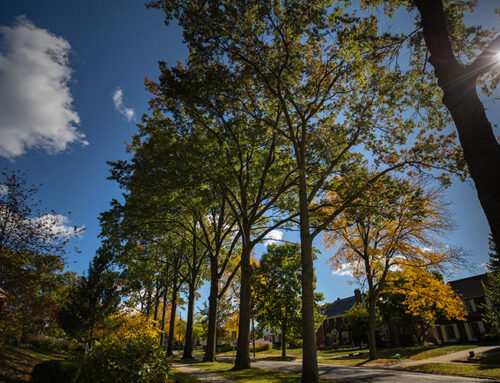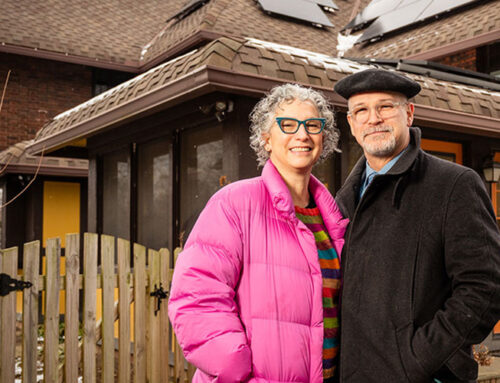As we transition from winter to spring, our thoughts turn to opening up the house to fresh air. But air sealing and proper ventilation are important year ‘round. We’ll cover the basics, some common issues, and methods to make your home more comfortable and efficient.
By Michael Peters
Air sealing and ventilation – the movement of air through your home are intimately connected. Ventilation can be either controlled or natural. Natural ventilation is called infiltration – through a drafty window, under the door, through a light switch on an exterior wall, etc.
While for decades builders thought infiltration was beneficial, studies have demonstrated that the more airtight a house is, the more durable and comfortable it is.
Why? As air is pushed out of your house by your vent hood, clothes dryer, or bathroom fan, outside air seeps in to replace it. If you have a leaky basement window, that will be one source of this “make-up” air. In winter, you are bringing in very cold and dry air. When it meets the warm air in your basement, condensation can form around the windows, on the walls, or inside your walls – a common source of mold. Plus your furnace uses energy to heat it.
Likewise in the summer you are replacing cooler and less humid air with warm and more humid air. This will again lead to condensation and increased energy use.
Air Sealing
You can address many infiltration issues with air sealing. Many of the most common gaps are accessible: around windows, doors, and where your foundation meets the first floor walls (the rim joist.) In these places you can use sealants, weather stripping, and insulation.
Insulating the rim joist costs only a few dollars at a home improvement store: a roll of batt insulation (unfaced fiberglass), a can of spray foam, and a piece of rigid insulation (usually pink or green). Using gloves and eye protection, simply cut a piece of the rigid insulation to fit between your joists, seal around it with the spray foam, and then cut a piece of the fiberglass to fit snugly in the space (don’t compress it, that actually lessens the effectiveness).This easy and inexpensive method is effective and you can do it in an afternoon. Alternatively you can have a contractor do this work.
Check Your Fans
Bathroom fans can also be overlooked but play an important part in the health of your home. Every bathroom (even powder rooms) should have a fan – and that fan MUST exhaust to the outside. Go up to your attic (or have your heating technician do it) and make sure the bathroom fans have a duct that goes either out the roof or out an exterior side wall. If the fan simply vents into your attic, have the technician correct this; you are dumping warm moist air into a cold dry (in the winter) environment, which can lead to condensation, mold, and rot.
The other important role a bath fan can play is to meet the code minimum ventilation requirements. This standard has a minimum ventilation rate (expressed in cubic feet per minute or cfm) based on the number of bedrooms and square feet of the home. For example, a 2,000-square-foot three-bedroom home requires a minimum constant ventilation rate of 120 cfm. A typical bath fan ranges from less than 80 cfm to more than 130 cfm, so this means you should have at least one fan running continuously.
Energy Recovery Ventilator
The idea is that contaminants, such as CO2 and the gasses from carpets and products you bring into your home, should be expelled and replaced with fresh outside air. If you have an older home without any bath fans, you should seriously consider having a contractor install them. However, there is a modern alternative that’s even better: a small box known as an ERV, or Energy Recovery Ventilator. Used for decades in commercial buildings, the growing popularity of the Passive House building standard has brought the ERV to homes. Any house will benefit from an ERV as it brings in controlled ventilation and captures the heat from the air being exhausted. This makes them energy-efficient while supplying your home with filtered fresh air 24/7.
While an ERV with dedicated ductwork is the best solution, that’s not always possible in an older home. However, you can add one to your existing forced-air furnace or ducted air conditioning system. If you have a boiler and radiators and no air conditioning, you can add one along with a small duct air conditioning system that most heating/air conditioning companies that service Shaker Heights are experts in installing.
Michael Peters, LEED AP, is a green building expert who lives and works in Shaker Heights. Follow him on Twitter at @CoventryLand.




